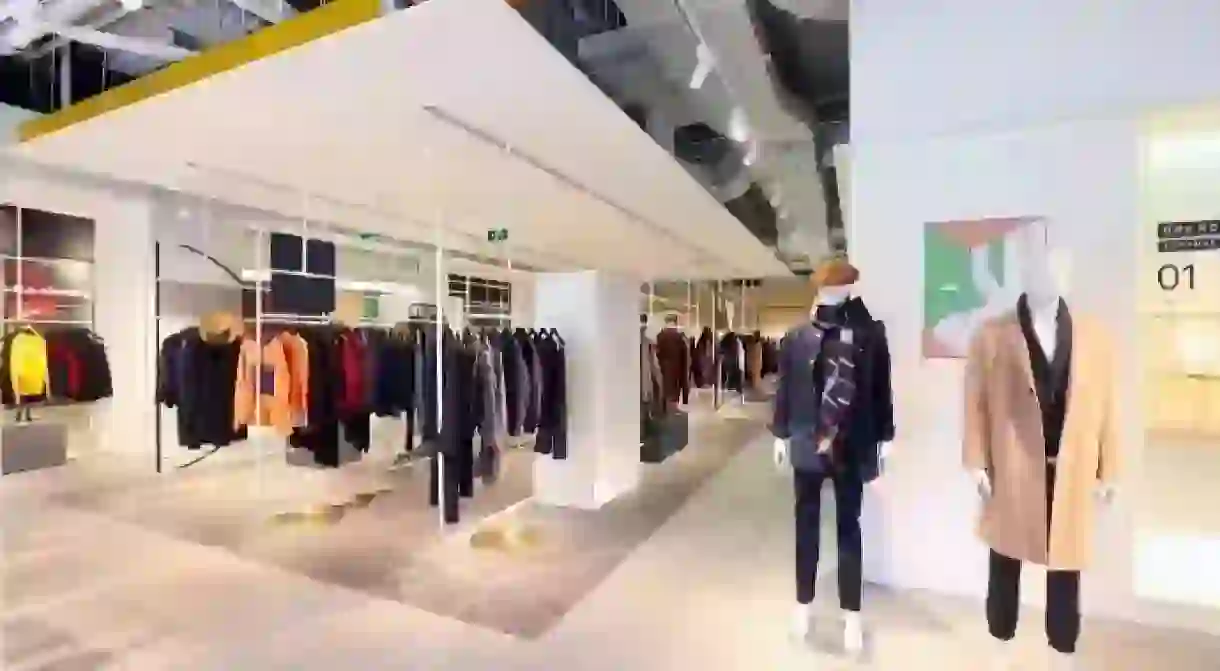Chinese Fashionistas’ New Shopping Paradises

We all know Chinese people love luxury brands. They can make Gucci and Louis Vuitton boutiques as crowded as Zara. Despite the fact luxury brands’ prices are much higher in mainland China than in Europe due to import tax, this does not prevent SKP – the most expensive shopping mall in Beijing – from being full of shoppers every day.
In recent years, with the development of the Chinese fashion industry – as influenced by Western-style fashion magazines, websites and social media – young people are very well educated about all aspects of fashion. They enjoy the famous luxury brands, but at the same time, they open their mind to new designers who are able to satisfy their craving for unique styles.
For new brands, this is also the best way for presenting themselves to clients – even Dolce & Gabbana and Kenzo made their success through the multi-brand boutiques in their formative years.

Lane Crawford
According to a report by the China Commercial Property Centre in 2015, Shanghai has the most multi-brand fashion boutiques (69), followed by Beijing with 56 and Guangzhou with 27.
The most successful multi-brand boutique is Lane Crawford in Hong Kong. It has over 100 years of retail history. The store covers womenswear, menswear, accessories, lingerie, fine jewellery, cosmetics and homeware. It now has four stores in mainland China, each offering more than 1,000 brands.
And these stores are not just shopping malls – they combine fashion with art and music to create a unique and special and shopping experience for the customer. Lane Crawford also offers a personal shopping service, which allows you to book appointments with your own stylist in the store.

Magmode
Magmode, a multi-brand boutique in Beijing, describes itself as a ‘dimensional magazine’. The founder, Chongda Cai, was an ex-chief writer on GQ China and is
also a famous writer.
Magmode is not just a store to selling designer clothes, artwork, homeware and decorative objects, but also a creative space for all kind of events related to fashion, art and culture.
Magmode invites designers and artists to become the chief editor of its ‘dimensional magazine’ concept, to create different visual product displays, exhibitions, events and window displays every month. Customers can expect a whole new aesthetic every four weeks.
Competitive market
With the boom in popularity of the multi-brand boutique and the added challenge of online shopping, competition in the market has become fierce. It’s particularly harder for smaller, physical stores of all kinds to make a profit, especially because of the cost of spiralling rents for prime locations in big cities.
According to Lane Crawford, while their Shanghai and Chengdu stores performed well, their two stores in Beijing barely had any profit growth in 2016. Not every firm can make a success of it.

As recently as February 14, 2017, the famous multi-brand boutique from Milan, 10 Corso Como, officially left the Chinese market due to the business’s failure to find a foothold in mainland China.
The increase in the number of multi-brand boutiques entering the Chinese market is seen as a good thing by the consumers, as this guarantees more choice and better shopping experiences. But it’s imperative for these boutiques to find the right position in the market, target the right group of customers and employ the right designers if they are to make a success in China. And no matter how great or how fun the shopping environment is, selling the products is always the brands’ ultimate purpose.













